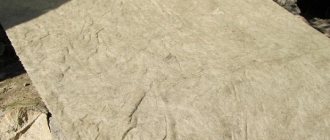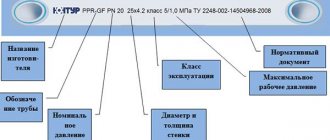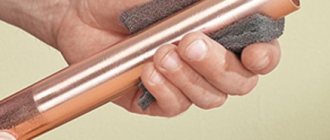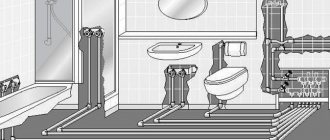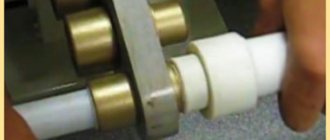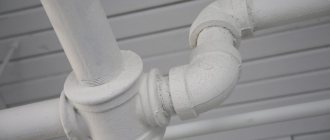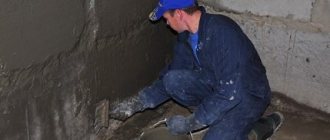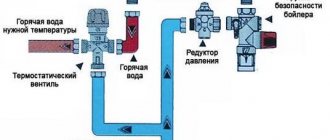How to connect plastic pipes
Polymer products for the home plumbing system are joined in several ways. When determining a suitable installation technique, the following criteria should be used:
- Purpose of the pipeline. For water supply, it is recommended to use welding, sewerage is created using sockets, heating is created using couplings of the appropriate size.
- Material of installed elements. The design of most polyvinyl chloride pipes is supplemented with special sockets, polyethylene lines are connected with compression couplings, and mechanical soldering irons are used to assemble polypropylene products.
- The scale of the work being carried out. For small volumes limited to the confines of an apartment or your own home, it is allowed to carry out the required activities yourself. Welding of large objects requires the involvement of specialized teams.
Threaded fasteners for connecting polymer elements are not used due to the inability to ensure the tightness of the pipeline. Installation technologies using sockets, couplings and welding are popular.
Connecting polymer pipes with couplings
Assembling parts of the water supply system with compression fittings prevents the formation of blockages, ensuring tightness. To clamp the ends of adjacent elements, nuts and cone-shaped O-rings are provided to withstand the pressure of liquid in heating circuits, sewer drains and water supply systems. Rigid fastening to the body of the one-piece pipe is ensured by special compression couplings.
It is allowed to use threaded connections for polyethylene products. A prerequisite is the flaring of the extreme surfaces of the mounted parts, which completes the process of putting on the nuts.
Tees, saddles, flanges and taps are used as fittings.
Connecting polymer pipes by welding
The method is used to assemble a water supply system from polypropylene elements. Half of household communications are created using a welding machine that affects the molecular structure of materials, providing improved characteristics to joints. The consumer instructions contain an indication of the heating time, determined by the thickness of the walls.
For pipes measuring 50-16 mm, small hand-held soldering irons are used. Dimensional products with large sections require the use of professional welding machines.
The technology of the method consists in heating the extreme surfaces of the joined fragments with special removable sleeves. The melted ends are joined, pressing tightly with strong pressure.
An improved option is welding with electric couplings. The heating process is controlled by an electronic program. The quality of the connection improves, eliminating the need for fastening. The heating elements connected inside the fixing device are supplied with voltage through the electrodes of special devices.
Special connection methods
For pipes made from cross-linked polyethylene, a separate installation method has been developed, based on the use of specific fasteners. Docking of polymer products with push fittings is used in complicated situations, at the intersection with a metal main, when assembling elements of different sections. Installation activities require a minimum set of tools. To create an effective connection, a calibrator and a knife are enough.
The fixing flange is made of brass and polyvinyl souflon. The scope of use is the formation of water supply systems and heating circuits. To improve the tightness, rubber rings are provided. After assembling the product, the pipe inserted all the way into the body of the push fitting cannot be dismantled. The water, turned on upon completion of the docking manipulations, pushes and clamps the wedge of the fastening device, preventing the possibility of leaks.
The advantages of the method include the absence of the need to use a large number of tools and the high speed of installation work.
Features of connecting various types of plastic pipes
Each type of plastic pipe has its own set of performance characteristics, which determines the choice of one or another installation method in each specific case.
Polypropylene pipes
The joining of such products is carried out exclusively by welding. To connect two sections of pipe, you will definitely need a special welding machine with a set of nozzles and a fitting of a suitable configuration - coupling, tee, angle, etc. In addition, it is advisable to arm yourself with a pipe cutter and a stripper (a device for removing the top reinforcing layer).
It is important! To increase the reliability of the welded joint, it is advisable to purchase fittings and pipes from one manufacturer.
The sequence of actions is approximately this:
- The welding machine warms up to the required temperature (the value depends on the cross-section of the pipe).
- By stripping, the top layer in the area of the joint is removed from both ends of the pipe.
- The fitting and pipe section are inserted into the heated nozzle. It is very important to strictly observe the exposure time. If the products are overexposed in the welding machine, they may become deformed; if underexposed, they will not provide the joint with the proper strength.
- The heated elements are tightly joined and held in this position until the plastic hardens.
Metal-plastic pipes
Here the master may prefer one of three installation methods:
- Using compression fittings. Perhaps the most popular method today. The pipes are cut with a special tool, calibrated, and their ends are chamfered. After this, the nut and compression ring are put on the pipe, and a collet with a rubber seal is inserted into its end until it stops. Next, the ring is placed on the collet and the nut is screwed on. The obvious advantage of this method is that the connection is detachable.
- Via compression fittings. The sequence of actions is practically the same, only the function of the nut and compression ring is assigned to one element - the crimp ring. It is fixed with a special press.
- Push fittings. The easiest and fastest installation method. The main work will be preparing the ends of the pipes. Next, the end of the pipe is simply inserted into the fitting until it stops. The entire water supply system is assembled in this way. After feeding the media, the fitting wedge is pushed in under pressure and clamped firmly.
Note! Regardless of the installation method chosen, you will need a pipe cutter and a calibrator. Without these devices, it will be difficult to ensure the proper degree of connection reliability.
Polyethylene pipes
It is also possible to connect such pipes in several ways: using electric couplings or compression fittings.
We recommend that you read: How to select and install a thermal valve for temperature control on a heating radiator
To work with electric couplings you will need a special device. The surfaces of the pipes to be connected are cleaned using a scraper and degreased. Next, the electric coupling is put on so that the joint is located approximately in the middle. After this, a device is connected to the coupling and an electric current is supplied to it, which heats up the metal spiral, causing the polyethylene to melt. As it hardens, it forms a strong and airtight connection.
Installation with compression fittings is carried out using the same technology as for metal-plastic.
PVC pipes
In most cases, such pipes are used for sewer construction, where fluid pressure is minimal. Installation is most often done in a socket. The smooth end of the pipe is covered with a layer of silicone and pushed until it stops into the socket of the next pipe, after which it is fed back 10 mm.
Another option is to connect the pipes with glue. Strictly speaking, the composition is not glue in the classical sense of the word. The viscous adhesive mass melts the top layers of plastic products, so here it would be more correct to talk about a type of welding.
The sequence of actions is as follows:
- The ends of the pipes are thoroughly cleaned and dried.
- A small chamfer is removed from the ends so that sharp edges or burrs do not interfere with the uniform application of the glue.
- The depth of the fitting is measured and a corresponding mark is placed on the pipe.
- The connected elements are treated with an adhesive composition.
- After connecting, the parts should be turned approximately a quarter turn. This will help distribute the glue evenly and fill the voids.
- The drying time of the joint largely depends on the ambient temperature, humidity and other factors. During this time, no force should be applied to the parts being glued.
It is important! After applying the glue, the parts should be fastened as soon as possible. The delay time should not exceed 25-30 seconds.
Rules for choosing technology
When determining the optimal assembly option, it is necessary to be guided by the performance characteristics of the system and material.
For the installation of water supply lines made of PVC pipes with a diameter exceeding 6.3 cm, it is customary to use compression couplings. If it is difficult to purchase fittings of suitable sizes, experts recommend using butt welding. The advantage of the method is that there is no need to purchase additional parts.
Socket technology has become widespread for self-connecting polyvinyl chloride structures of the same diameter. The correct location and giving the correct direction to the pipe line is achieved by using scrap iron. Inventive craftsmen use a jack.
For the assembly of non-pressure polyethylene systems, gluing can be used. Mechanical threads for mounting such products are recommended in special situations.
Installation of a pipeline made of plastic pipes
There is no question of how plastic pipes are connected to each other if they are the only material of the entire system. The plastic is mounted by soldering or connecting and/or distribution fittings made of the same material.
The use of metal components is not recommended: the difference in thermal conductivity will affect the quality of the connection. Methods for connecting plastic to other components depend on the material and type of reinforcement.
Building up
It is not difficult to understand how to connect plastic pipes for sewerage or water supply to extend them. The fitting for this type of material is a piece of a similar tube with a slightly larger diameter.
This capsule is placed over the cleaned and degreased edges and compressed with a special soldering iron set to medium temperature.
It’s not difficult to understand the working technique: soldering irons are designed for a certain standard diameter, so you don’t have to control the level of pressure and temperature. The connection turns out to be non-separable and even unnoticeable.
Connection with metal pipe
Connecting dissimilar pipes is more problematic. When figuring out how to connect a cast-iron sewer pipe with a plastic one or an outdated metal heating system with a modern one made of reinforced plastic, it is worth focusing on several important aspects:
- before choosing fittings, you must carefully measure the diameter of the metal elbow;
- to cut and strip a metal pipe you will need a grinder; The adapter between metal and polymer will be a plastic socket.
Having decided where and how to connect the plastic pipe to the cast iron one, you can begin installation. The operating procedure is as follows. The metal piece is cleaned and degreased. The seal is placed in the grooves of the socket and pressed tightly against the inner walls. After placing the pipes, the system is intercepted with clamps.
This technique is often used when installing a toilet. A successful alternative to such a system is a drain with a corrugated drain: since it is much easier to connect the corrugation with a plastic pipe.
Instead of fastening clamps, glue or sealant is used. Connection with a metal-plastic pipe To connect a plastic pipe with a metal-plastic pipe, collet fittings are used. Their basis is a thread applied to the outer part of the capsule. A pipe of the appropriate diameter is screwed onto it.
Collet fittings are commercially produced only for communications with a combination of materials, but also units designed for joining pipes of different diameters to each other. The use of press fittings with plastic materials is irrelevant.
You can install water supply and heating systems yourself, saving on calling a specialist. This can only be done if you are fully confident that your skills are sufficient to carry out such work.
Otherwise, the savings may be tripled to eliminate the consequences of the breakthrough.
Methods for connecting polymer pipelines
When choosing a technology for joining plastic pipes, they are guided by the purpose of the line, the type of polymer material and the geometric characteristics of the product.
The following methods have become widespread:
- Bell-shaped diagram. It is recognized as the optimal option for sewerage with a randomly moving liquid medium.
- Gluing. It is divided into two categories: using standard adhesive and “cold welding”. The latter changes the molecular structure of the polymer, melting the top layer of the material with a special composition. Suitable for all types of pipelines, with the exception of the heating circuit.
- Threaded fixation. It is considered a suitable method for assembling combined structures combining plastic and metal products.
- Diffuse welding. An alternative name for the technology is high temperature coupling. It is performed by joining parts that have been preheated in a specific device.
- Flange mounting. It is the best option for combining plastic with metal. Provides for the use of special welded bushings for flanges or removable metal elements.
- Collet design. The use of a compression fitting with a seal made of rubber material ensures high-quality fixation. The installation process is accompanied by the engagement of the teeth of the metal tube with the polymer, creating a reliable fastening.
- Electrofusion welding. Requires preliminary preparation of collected fragments. Cleaned and degreased parts are connected with a special fitting to the electrodes placed inside. Under the influence of tension, the plastic heats up and the pipes are joined. This technology is not recommended for the formation of heating systems due to the insufficient strength of the prefabricated structure.
To create a polymer pipeline, it is possible to use various methods, both with the participation of a welding machine and without soldering. The equipment is capable of providing effective adhesion of plastic elements. Fastening parts without heating, in a cold way, simplifies the process of performing installation work.
Connection types
Different types of plastic pipes can be joined using several technologies. The choice in favor of one or another option is determined, first of all, based on the purpose of the future pipeline system, its diameter and the type of polymer material itself:
- In the bell. The end of one of the pipes is placed in the socket at the end of the other. The joint is sealed with a rubber gasket and additionally treated with sealant. This method has proven itself well in the construction of sewer pipelines and other networks in which the media is not distributed under pressure.
- Flange connection. Welded bushings or overhead steel flanges are used. The best option for joining metal and plastic sections of the pipeline.
- Threaded connection. Also used when installing elements made of plastic and metal.
- Docking using collets. It is convenient to connect products of small cross-section. Installation is carried out using compression fittings equipped with rubber sealing elements. During the crimping process, sharp metal teeth cut into the top layer of the pipe, creating a secure connection.
- Use of electric couplings. The device is put on the joint, and when an electric current is passed through it, it contracts. The joint turns out to be quite reliable, but it is not recommended to use this connection method for plumbing or heating networks.
- High temperature welding. The ends of the fastened products are melted using a special welding machine, and then connected. After cooling, the joint is as strong as the main pipeline. Welding can be carried out using fittings or butt welding. The last option is acceptable only for networks without strong pressure drops.
- Gluing. Two options are also acceptable: the use of cold welding, or special adhesives intended for polyvinyl chloride products. The first provides more reliable contact, since it affects the elements being glued at the molecular level.
We recommend that you read: Partial and complete replacement of heating pipes in an apartment
Non-welding connection for various types of plastic pipes
The choice of a suitable technology for assembling polymer main systems for water supply in a residential area is determined by the characteristics of the material.
The following methods of joining plastic products without a soldering iron are used in construction:
- The main purpose of compression fittings is to form a single structure with pipeline elements made of polyethylene. Experts note the advantages of the method, expressed by a minimal set of installation tools, limited to a crimp wrench. Disadvantages include the labor required to process each individual joint.
- The connection of pipes made from polypropylene is carried out by socket welding performed by a specific device. Threaded couplings are used to insert into the metal part of the water supply system. Detachable flange connections with slip-on or welded elements are involved in the formation of dimensional lines.
- The assembly of metal-plastic pipe products is carried out using push, press and crimp fittings. The first type has gained popularity due to its ease of installation and a minimal set of tools.
- PVC pipes are joined using special sockets provided by the design. It is allowed to use an adhesive connection.
- To form water mains from cross-linked polyethylene, coupling technology is used. Flange coupling is carried out by slip-on metal elements or adapter bushings. It is possible to assemble using compression fittings.
Connecting pipes with a coupling.
Joining of polypropylene pipes
Polypropylene parts with a diameter of up to 63 mm are connected:
- Using compression fittings, without the use of special equipment.
- In a socket or using sleeve welding. For larger diameter products, butt welding is recommended.
When connecting polypropylene elements with a diameter of up to 40 mm, it is permissible to use a manual welding machine. For larger diameters, you will need a unit with a centering device. The nozzle (heating element) consists of a sleeve and a mandrel, which melt the outer surface of the pipe and the inner side of the socket. A standard Teflon nozzle with a diameter of 16-40 mm is cleaned after each welding (it is unacceptable to clean a cold nozzle from plastic!).
To carry out welding, a machine with the required nozzles, which produces an operating temperature of 260º, is installed and fixed on a flat surface. Then:
- the pipe is cut perpendicularly;
- its end and the socket of the fitting are cleaned;
- at a distance 2 mm greater than the depth of the socket, a mark is applied to the element to be connected;
- the pipe is inserted into the sleeve, the socket is put on the mandrel;
- After maintaining the required heating time, the parts are removed and joined.
To connect polypropylene pipes, special equipment is used, with the help of which the ends of the workpieces are heated to the required temperature
Features of connecting plastic and metal pipes
The joining of polymer and cast iron pipes is carried out using special adapters of various sizes. This technology is used to repair sewer drains.
When combining plastic products with metal ones in water supply systems, appropriate couplings provide increased reliability of the design. On one side of the mounting element there is a thread, the other is equipped with a connecting fitting. Increased pressure in the line requires careful sealing, performed with flax fibers impregnated with drying oil.
To repair a pipeline with a cross-section exceeding 40 mm, it is recommended to use flange technology. Purchasing adapters of the required size is not difficult.
When combining different materials in high-pressure water supply systems, it is advisable to use a metal hose. The mounting element is attached to the plastic part using an appropriate fitting. A threaded thread is used for adhesion to a metal pipe.
Types of plastic pipes
Before you figure out how to connect plastic water pipes, it’s worth finding out what types are in stores and how they differ from each other.
Plastic pipes come in the following types:
- PVC - products made from polyvinyl chloride are characterized by a particularly smooth inner surface and neatness of the outer wall, due to which the products are widely used for plumbing structures and water pipes. The main advantage of this type of product is ease of installation, which does not require special equipment, since the connection occurs in a “cold” way.
- PP - polypropylene structures are single-layer and multi-layer. The diameter of such products starts from 16 mm and reaches 1.25 meters. Polypropylene pipes can be connected using a special device. One of the advantages of this type is the possibility of their transition using special fittings to metal fittings, which is quite relevant in residential buildings when designing heating and plumbing structures.
- PE - polyethylene structures are a universal means for repairs at any time of the year, as they can be installed even at temperatures of -20 degrees. There are two types: HDPE (low pressure) and HLPE (high pressure). The diameter of these plastic pipes ranges from 20 to 63 mm with maximum pressure values from 5 to 10 atmospheres. For welding, inside each structure there is a rubber coupling, which makes it easy to carry out electric welding.
- PEX - products made from cross-linked propylene undergo additional high-pressure processing during production, which makes structures made from such material more durable, even with constant temperature changes. Such products are used both for domestic purposes and for constructing floor heating systems. The connection is made using fittings and treatments with special gases or by irradiating a stream of electrons.
- PEX-AL-PEX - metal-plastic structures have additional resistance to external influences, thanks to a layer of aluminum foil, which is located between two layers of cross-linked polypropylene. Despite the multilayer nature of such products, metal-plastic reinforcement remains flexible. The connection is made using fittings for crimping or twisting.
When making your choice in favor of one of the types of plastic pipes, it is initially recommended to study the installation features of each.
Practical recommendations
Polymer products are widely used in the construction of utility networks, finally displacing steel and cast iron structures. The main advantage of the innovative material is the simplified assembly process.
Plastic pipes used in the installation of household water supply systems are lightweight. Non-corrosion and resistance to aggressive chemicals ensures a warranty period of 25 years.
Special connection methods
Push fittings, press fittings, flanges are special compounds of polymer materials.
They also solve the problem of how to connect plastic pipes in difficult cases: a joint with a metal main, a connection of different diameters. Push fitting allows you to use a minimum of tools (calibrator, knife). The fastening element consists of polyvinyl soufflon, brass, suitable for heating and water supply circuits.
The connection is considered permanent, the tightness is ensured by rubber rings. The pipe is inserted all the way into the fitting body, after which it is impossible to remove it back. Press fittings are crimped onto the body of the pipe with a hand wrench; they are also non-removable and are suitable for heating and water supply.
What materials are plastic pipes made from?
The characteristics of materials influence the choice of installation technology.
Home water supply lines are made from the following polymers:
- cross-linked polyethylene;
- metal-plastic;
- polyvinyl chloride;
- polypropylene.
The assembly method is determined by the characteristics of each variety.
Polypropylene pipes.
How to connect PVC pipes
Socket technology is based on the gluing method and is carried out as follows:
- for better adhesion, treat the outer end of one pipe and the inside of the socket with another sandpaper, ensuring surface roughness;
- sanded edges are degreased;
- apply adhesive;
- at maximum speed, the product is inserted into the coupling until it stops, and rotated ¼ turn;
- The fastened elements are pressed tightly against each other for 60 seconds.
Proper installation is indicated by a strip of glue protruding at the joint.
Connection of PVC pipes
PVC products are usually joined into a socket. Sections of the required length are cut with a pipe cutter (or hacksaw). The end to be connected and the inner surface of the socket are cleaned and degreased. A rubber seal is installed in the socket. The smooth end of the pipe, lubricated with silicone, is inserted until it stops, and then pulled back 7-10 mm, to a pre-set mark. This provides greater strength to the connection. The assembly itself is usually carried out manually, and for positioning they resort to using a crowbar as a lever (in difficult cases they resort to a jack).
Connecting PVC pipes with glue is a fairly reliable method that ensures the tightness and durability of the system
The glued connection of PVC plastic pipes is carried out in the following order:
- After cleaning, the surfaces to be joined are sanded until rough to enhance adhesion.
- The glue is quickly applied in a uniform layer to 2/3 of the socket and the entire calibrated part of the pipe.
- Having inserted the pipe into the socket all the way, turn it a quarter turn. All operations are carried out within three minutes.
- The elements to be joined are pressed tightly for about a minute, so that a thin strip of glue is squeezed out at the joint.
How to connect metal-plastic pipes
Metal-plastic lines are formed using fittings - auxiliary parts that fasten polymer products.
The following types of plastic connectors are used:
- crimp, characterized by simplified assembly;
- push elements, characterized by high speed and ease of installation, eliminating possible errors during installation, anti-corrosion properties, effective seals, and the ability to replace individual parts;
- press fittings forming connections of increased reliability.
Types of connections. Their advantages and disadvantages
The main methods of connecting plastic sewer or water pipes are:
Welding creates a strong connection. To carry out welding work, a special apparatus is required. A significant disadvantage of welding is that it produces a permanent connection, that is, if a leak is detected in the joint, a complete replacement of the unit will be required.
Connecting plastic pipes by welding
Welding can be used to connect polypropylene, polyethylene and polyvinyl chloride pipes.
The use of compression fittings is permissible when constructing a pipeline from the following types of plastic pipes:
- metal-plastic;
- polypropylene;
- polyethylene.
The connection using a fitting is detachable, which allows for periodic repair work without replacing individual elements of the pipeline system. At the same time, it turns out to be highly durable and not subject to mechanical stress.
Special fittings for connecting plastic pipes
In addition to the main ways to connect pipes, you can:
using a special glue that softens the top layer of plastic for a while to obtain a connection. This procedure is also called cold welding. PVC pipes are mainly installed using the cold welding method in the construction of domestic pipelines;
Application of cold welding
electric couplings (used for polyethylene pipes). The connection is made by melting the spirals located in the fitting. The use of electric couplings is permissible in the construction of both external and internal pipelines. However, expensive equipment is required to get the job done;
Connecting pipes with electric couplings
compression fittings. A distinctive feature of this type of fitting is the presence of a special ferrule, which is used to create a connection between the pipe and the fitting;
Using a Compression Fitting to Connect Pipe
push fittings. New fittings allow you to quickly and reliably assemble pipelines without additional equipment.
Technology for installing new push fittings
Push fittings and crimp fittings can only be used when constructing a pipeline from metal-plastic pipes. For other types of pipes this connection is not acceptable.
How to connect polypropylene pipes
For this type of polymer products, there are 2 assembly options:
- compression fittings;
- welding method.
Welding is performed in two ways. For the first case, a socket connection using a special coupling is used. In the second, the ends of the pipes, heated with a soldering iron, are attached end-to-end.
How to connect cross-linked polyethylene pipes
The process consists of performing the following steps one by one:
- a section measuring 5 cm is cut off from the tubular product with a special tool;
- from the side of the connecting fitting, the mounting sleeve is put on through the internal groove;
- flaring is performed manually or hydraulically;
- A coupling is inserted into the pipe, the crimping procedure takes 3-4 minutes;
- the tool is applied to the connection area with extreme care to prevent distortions;
- the sleeve is pushed onto the fitting until it stops;
- a similar process is repeated for the other end.
Types of pipes made of polymer materials
Among the variety of polymer products, the most popular are the following types of pipes:
- polypropylene;
- polyethylene;
- made of cross-linked polyethylene;
- polyvinyl chloride (PVC).
In addition to these basic materials, pipes are commercially available whose interior is coated with a thin layer of aluminum foil.
One of the main advantages of any pipes made of polymer materials is their smoothness, which contributes to the unhindered passage of liquid, reduced noise levels, and their resistance to oxidation. However, such products are quite sensitive to mechanical damage, such as impacts or sudden bending.
It is noteworthy that plastic pipes have the ability to expand, which reduces the likelihood of a main line breaking during water transportation.
However, it is worth considering that when heated, a polymer pipe begins to lengthen and the threaded connection weakens, therefore, for polypropylene products, critical temperature thresholds are set at 140 ℃. In any case, the type of connection of plastic pipes directly affects the period of active use of the pipeline.
